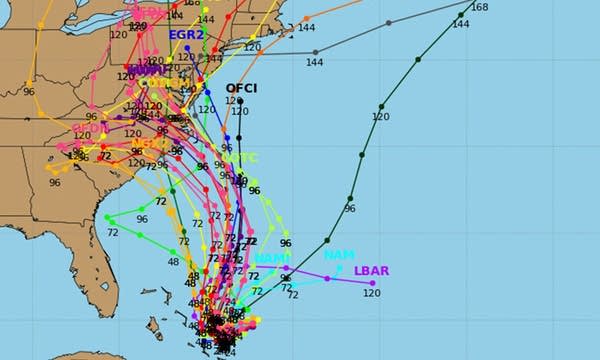Why predicting COVID-19 is like forecasting with a broken weather model
Limited data inputs and rapid changes make predictions difficult

Hurricane Joaquin spaghetti models
NOAA via tropical tidbits
Go Deeper.
Create an account or log in to save stories.
Like this?
Thanks for liking this story! We have added it to a list of your favorite stories.


